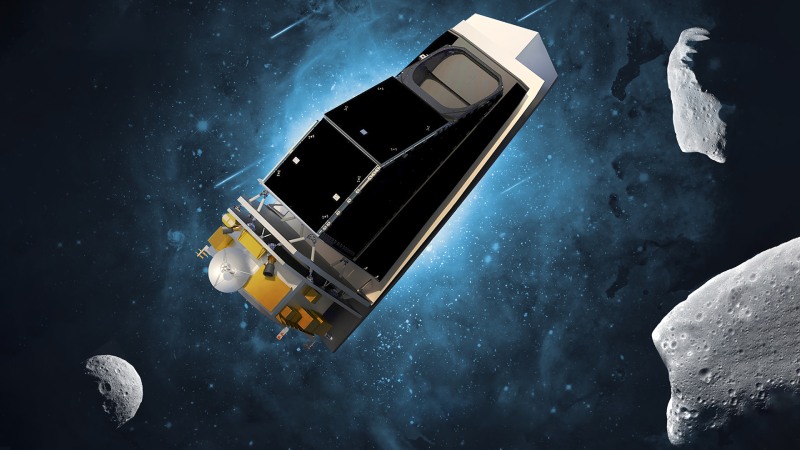NASA Selects SpaceX to Launch Planetary Defence NEO Surveyor

NASA has selected SpaceX to launch the Near-Earth Object (NEO) Surveyor mission, a space telescope designed to detect and monitor potentially hazardous comets and asteroids. This mission marks a major breakthrough in planetary protection by improving our ability to identify and mitigate potential impact threats.
Launche Date
As early as September 2027, NEO Surveyor will take off from Florida aboard a Falcon 9. It will function from the L-1 Lagrange point, which is 1.5 million kilometres from Earth and faces the sun.
Increasing the Power of Planetary Defence
A vital component of NASA planetary defence strategy, the NEO Surveyor mission aims to enhance our capacity to identify, describe, and monitor near-Earth objects (NEOs), which are comets and asteroids that orbit within 30 million miles of Earth. There are still a lot of these undiscovered space rocks that could present serious hazards down the road.
A state-of-the-art infrared space telescope with a primary mirror that is 50 centimetres (almost 20 inches) in diameter is at the centre of the mission.
The telescope will be able to detect both brilliant and dark asteroids since it will work in two infrared wavelengths. NEO Surveyor will be revolutionary in planetary defence because it can detect black asteroids, which are frequently invisible to optical telescopes situated on the ground.
Feature
A 50-centimeter-diameter telescope with infrared detectors will be part of the spacecraft. NEO Surveyor will be able to identify near-Earth objects using that instrument and ascertain their sizes and orbits.
Examining the Skies Objectives and Potential
The goal of the NEO Surveyor’s five-year baseline survey is to find at least two-thirds of NEOs that are larger than 140 meters (460 ft). Because they are big enough to destroy entire regions if they hit Earth, these objects are especially dangerous.
In addition to detecting these objects, the onboard infrared imaging equipment will assist scientists in determining their size, composition, form, rotational characteristics, and orbits. The NEO Surveyor telescope will have an unhindered view of space, significantly improving detection capabilities in contrast to ground-based telescopes that may be constrained by air interference.
Launch Mission Schedule
The launch service is being managed by NASA’s Launch Services Program (LSP) at Kennedy Space Centre in Florida, which makes sure that every element of the Falcon 9 launch satisfies mission criteria.
In keeping with NASA long-term commitment to planetary defence, the NEO Surveyor mission is currently slated to launch no earlier than September 2027. In order to safeguard Earth from any asteroid collisions, NEO Surveyor will be essential as technology develops and new dangers are discovered.
NEO Surveyor can proceed to the following stages of testing and assembly. The Johnson Space Centre is doing environmental testing on the instrument container, a component of the spaceship. That and other parts of the spacecraft will travel to Utah’s Space Dynamics Lab later this spring to conduct additional testing and integrate other parts.


